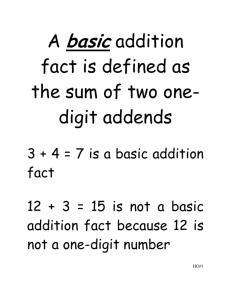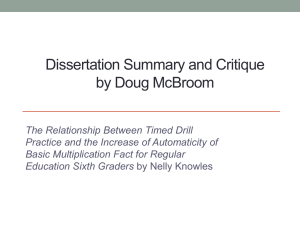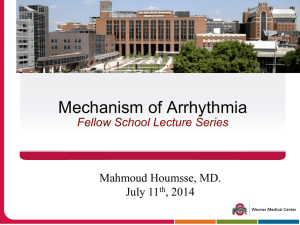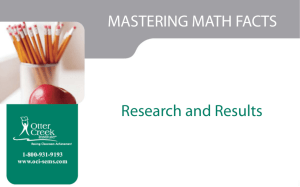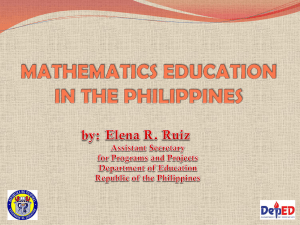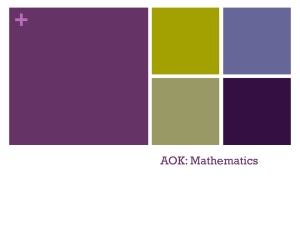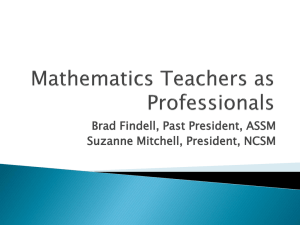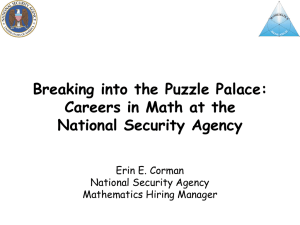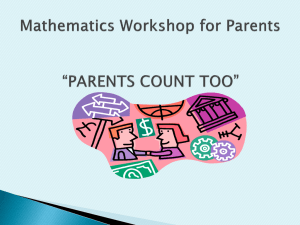EMS 792 Literature Review Presentation
advertisement
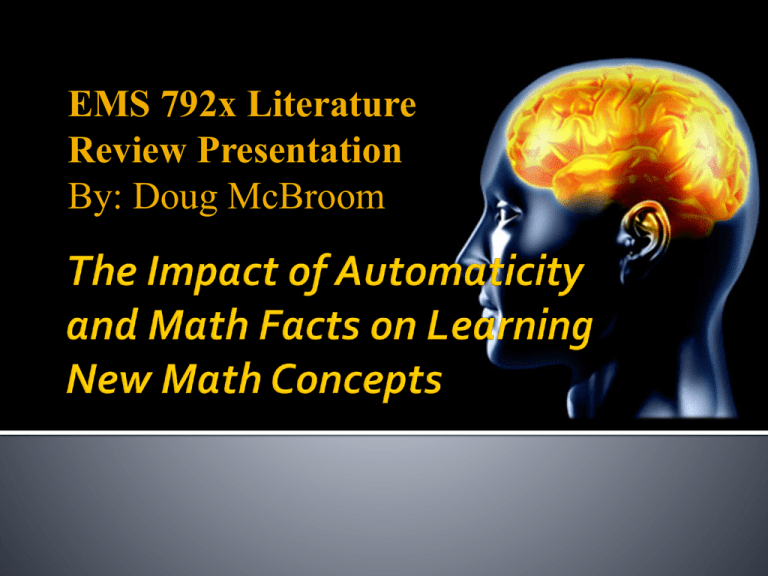
EMS 792x Literature Review Presentation By: Doug McBroom Students struggle with basic computational skills in classrooms, making it more difficult for students to learn new and more complex topics (Ashcraft, 2007; Woodward, 2006). If there is a correlation between students’ mathematical automaticity and learning new mathematical topics, then it is imperative for educators to research this correlation and to reinforce the concept of automaticity in the classroom. The period of sensorimotor intelligence from birth to age 2. The period of preparation and of organization of concrete operations of categories, relations and numbers from age 2 to age 11, which is further subdivided into the preoperational stage from ages 2-7 and the concrete stage from ages 7-11. The period of formal operations from ages 11 to 14. Although Piaget based his three periods on age levels, understanding of concepts builds on previous learning (Piaget, 1973). New or “novel” behaviors require attention and flexible thinking so are dependent of the cerebral cortex. Automatic behaviors do not need these, so do not primarily need the cortex, but are transferred to the subcortical levels of the brain (Ashby, 2007). Automaticity is performance of a skill without conscious control or minimal awareness (Axtell, 2009). Working memory is the capacity to store and maneuver information for short periods of time; information made available to the mind as needed to carry out a mental task or to solve a problem (Tronsky & Royer, 2002). Fluency is conceptualized as responding both accurately and quickly to a selected stimulus (Axtell, 2009). Retrieval is the process of obtaining memory information from wherever it has been stored (Saunders, 2007). Recall is to remember or to recollect (The American Heritage Medical Dictionary, 2007). Anxiety is a state of apprehension and fear resulting from the anticipation of a threatening event or situation (The American Heritage Science Dictionary, 2005). Automaticity development through practice (Britt, 1982; Kroesbergen, 2002). Automaticity development through timed drill and practice (Woodward, 2006) . Computerized drill and practice developing automaticity and student attitude (Watkins, 1989). Memory and Anxiety (Prevatt, 2010). Research has indicated that increased mathematics automaticity correlates to improved student performance in mathematics. Effect of improved automaticity and student performance (Pegg, 2005; Cumming, 1999; Mason, 2006). Research indicates that there is some correlation between mathematics automaticity and computerized practice. Computerized practice and improved automaticity (Judd, 1970; Watkins, 1989; Whitman, 1998; Parkhurst, 2005; Christensen, 2009). Research indicates there is a correlation between working memory and automaticity (Tronsky, 2005; Swanson, 2007; Savage, 2005). Working memory and mathematics performance (Swanson, 2008; Zheng, 2011; Ashcraft, 2007). Research into various methods of increasing automaticity with students. Student centered activities (Drawbert, 2010). Copy, cover, and compare (Becker 2009). Taped Problems (Cressey, 2008). Detect, Practice, and Repair (Poncy, 2010). Fluency (Ramos-Christian, 2008; Axtell, 2009). Research indicates a correlation between mathematics automaticity and reduced math anxiety (Beilock, 2007; Prevatt, 2010; Ashcraft, 2007). Developing automaticity with technology (Whitman, 1998). Improving student automaticity in mathematics and learning new math concepts. Future research should include methods of developing automaticity, automaticity and gender, ethnicity, etc., math concepts where automaticity is most beneficial, longitudinal studies, and early grades automaticity versus middle grades automaticity.
